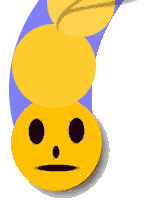
Guided
Research
What do want to learn
What we already know
What we're going to do
Share our data
See others' data
Picturing the data
What does data mean?
More questions
What do we do now?
Student
Research
Publish
View
|
After we have shared our common information in the
What do we
already know? section, we have to decide how we're going to find out
which solvent/method combination removes the stains best. We want
to make sure that the stain is removed without losing the color of
the shirt.
There are many ways of doing research. To find the answers we are
looking for, we will need to use a certain kind of research called
experimental research. In experimental research, we have to be
careful with the measurements we make and the methods we use. We
have to explain everything we do so that others can try to do our
experimental research themselves. We want others to do our
experimental research to help prove how correct our conclusions
are.
As part of our experimental research, we need to make sure that
everyone is using the same materials and are following the same
instructions. We need to collect our materials first. You will
need:
These are the solvents that the KanCRN director already has at home.
- Mustard (French's mustard is the brand most people will be using. If you use another brand, be sure that is a yellow mustard and not a brown, spicy or Dijon mustard. Include the brand of the mustard in the Comments area if you're using another brand.)
- Grape-flavored Kool-Aid soft drink mix (Kool-Aid is the brand most people will be using. If you use another brand of soft drink mix be sure that it is the unsweetened kind. Include the brand of the mustard in the Comments area if you're using another brand. You'll need to make the Kool-Aid according to directions. This usually includes one cup (230 mL) of sugar for 2 quarts of Kool-Aid.)
Light blue, 100% cotton cloth 12" X 8" (30.5cm X 20.5cm).
You will, also need to choose from the following solvents:
Choose a solvent from the following to test:
 |
- Alcohol - non-colored rubbing alcohol (Isopropyl 70%).
- Bar Soap - any brand (Name the brand when you send your data).
- Bleach (Sodium Hypochlorite 5.25%) - 1 tablespoon (15mL) + 1cup (237mL) luke
warm water (Name the brand when you send your data).
- Detergent paste - Add water a few drops at a time to 1 teaspoon (5ml)
of laundry detergent until a paste is made (Name the brand when you send your data).
- Dishwashing Detergent - 1 teaspoon (5mL) dishwashing detergent + 1
cup (237mL) lukewarm water. (Name the brand when you send your data).
- Household Ammonia (Ammonium Hydroxide) - 1 tablespoon (15mL)
household ammonia + 1/2 cup (118mL) water (Name the brand when you send your data).
- Market Stain Remover - choose one of the liquid stain removers (Name the brand when you send your data).
- White Vinegar (5% acidity) - 1/3 cup (79mL) white household vinegar +
2/3 cup (158mL) water (Name the brand when you send your data).
These are the methods with which the KanCRN director is familiar.
Choose one of the following methods to
use with a solvent
| Brushing - Use a toothbrush to gently rub the solvent into the stain. |
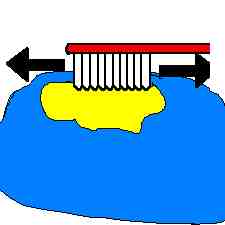
|
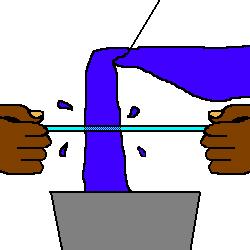 |
Flushing - Have one person in your group hold
the material while another partner gently pours water through the material
with the stain. A bucket or a clean white (paper) towel can be placed under the stained material to catch the water. |
| Presoaking - Soak the item in the solvent
for 30 minutes. Rinse with water for 5 minutes before washing. |
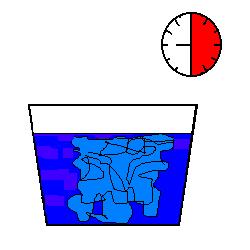 |
 |
Rubbing - Rub the solvent into the stain using your finger. Place a white (paper) towel
under the stain to absorb any excess solvent or stain. |
| Scraping - Using short strokes with a dullknife, spoon or spatula on a stain before washing. |
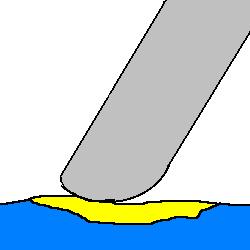 |
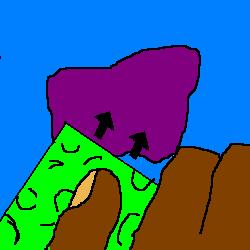 |
Sponging - Place a white (paper) towel under the
stain. With a sponge make light strokes from the outside toward the center of the stain.
Change the towel or the sponge as it becomes stained. |
Before conducting an experiment, every researcher makes a hypothesis about
the outcome. If you predict that a certain solvent/method combination
will be the most successful because you have not idea and you're willing
to say any combination, you are not making a wild guess NOT a
hypothesis. A hypothesis is so much more than a guess. A hypothesis
is a prediction about the outcome of an experiment based on current
assumptions and the requirement that certain conditions exist.
Let's break down the definition into simpler terms. A prediction is what the researcher believes the results of the experiment are going to be. For example, a researcher might predict that bleach and brushing are going to be the best combination for removing the Kool-Aid and the mustard stains. Another prediction may be that washing alone will not remove the stains. Many times beginning researchers stop there when making a hypothesis. However, a hypothesis needs to include assumptions and conditions.
Assumptions are those things that you believe to be true. Assumptions are based on your previous experiences. An assumption that may be made by a researcher is that all of the solvents will be able to remove at least some of both stains.
Conditions are things that have to take place in order for the predicted results to occur. A condition may be that the stains have to be set or that only cold water is used in the washing cycle. Another condition is the shirt must be 100% cotton and is light blue.
Keeping these three parts in mind, a hypothesis needs to be made. An example of hypothesis could be:
"I think that detergent paste and scraping will be the best combination for removing a set mustard stain and a set grape Kool-Aid stain from a light blue, 100% cotton shirt without losing the color of the shirt. I've helped my mom wash the clothes and we always use a detergent paste on a stain and then scrape it off before washing it."
Make your hypothesis now.
Procedure:
>This is a three day activity taking 45- 60 minutes each day.
DAY 1
| 1. Cut the shirt into 4 inch squares. Each group will need 6 squares. With a permanent marker, label one square with an A in the upper left hand corner. Label the second square
B, the third one C, the fourth one D, the fifth one E and the sixth one F. |
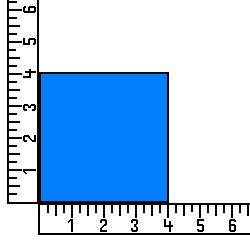 |
| 2. On the square labeled A, place a spot of mustard
(the size of a dime) in the center. Let stand for 5 minutes.
Wipe off any excess. Do the same for squares C and E. |
 |
| 3. On the square labeled B, add the Kool-aid one drop
at a time until the spot is about the size of a dime. The liquid
may spread farther than a dime after you've stopped adding drops, but
that's o.k. Do the same for squares D and F. |
 |
| 4. Let all stains stand over night so they will set. |
 |
| 5. Choose one of the solvents
and one of the methods and collect the materials
you'll need for the next day's work. |
 |
DAY 2
Next day, apply the solvent you chose using the
method you chose to the mustard spot on square A and the kool-aid spot on square B.
Do not do
anything to squares C, D, E, and F.
Squares C and D will go through the wash
cycle, but will not be treated with a solvent or method. Squares C and D will be used as controls to determine how much effect washing alone will have on each stain.
Squares E and F will be placed to the side and used as standards for comparison to squares A, B, C, and D.
This comparison will be scored using the "Change in Stain" and "Shirt Color Loss" rubrics provided on Day 3.
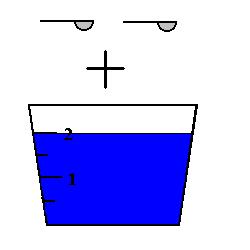 |
1. This step simulates the action of a washing
machine. In two cups of lukewarm water, add two teaspoons of laundry
detergent. |
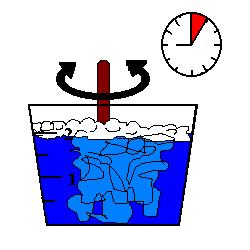 |
2. Place both treated squares in the water and stir
back and forth for 5 minutes. |
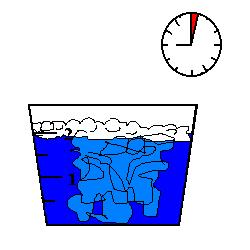 |
3. Let stand for 2 minutes. |
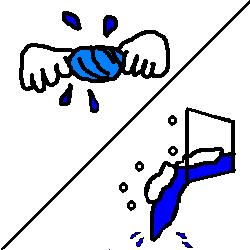 |
4. Take the squares out of the water and wring as much
water
out as possible. Rinse all of the detergent solution out of
the container. |
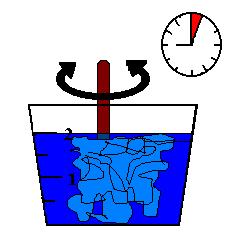 |
5. Add one cup of luke warm water to the container and put
the squares back in it. Stir back and forth for 3 minutes. |
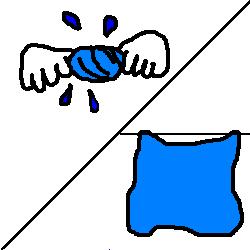 |
6. Wring out the water. Hang each piece to dry
overnight.
|
DAY 3
The real rubrics are the written words that appear below. The pictures are there only as EXAMPLES. Don't try to compare your cloth to the image on the computer. The color on a computer screen varies from computer to computer. If you score your cloth by comparing it to the pictures, your score will probably be inaccurate.
Compare the treated and washed square A to the unwashed square E. Compare the treated and washed square B to the unwashed square
F. Score the Change in the Stain according to the rubrics presented below.
Rubrics
 |
Change in the Stain |
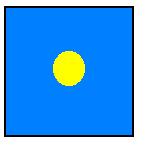 |
 |
1. No change in the stain. |
 |
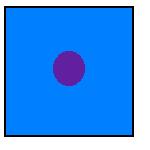 |
2. Slight change in the stain. |
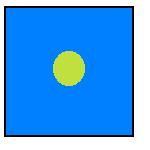 |
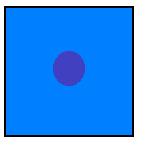 |
3. Large amount of the stain is gone but you can
still tell that the stain is there. |
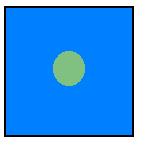 |
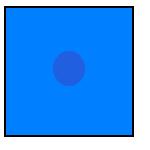 |
4. Most of the stain is gone but there is still
a trace of it. |
 |
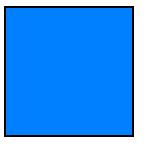 |
5. No trace of the stain. |
 |

|
Next, compare square A to the square E and compare the treated and washed square B to the unwashed square
F. Score the Loss of Color according to the rubrics presented below.
Be sure to give separate scores for the Shirt Color Loss--Mustard Stain as well as the Shirt Color Loss--Kool-Aid Stain. Again, the real rubrics are the written words that appear below. The pictures are there only as EXAMPLES. Don't try to compare your cloth to the image on the computer. The color on a computer screen varies from computer to computer. If you score your cloth by comparing it to the pictures, your score will probably be inaccurate.
|
Shirt Color Loss in the Stain Area
|
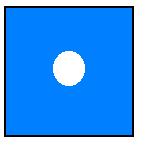 |
1. All color of the shirt is gone in the area of the stain. |
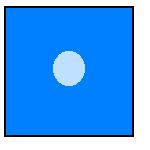 |
2. Most of the shirt color is gone but there is still a trace of it. |
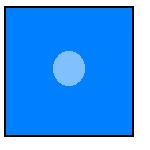 |
3. Large amount of the shirt color is gone but you can still tell the color of the shirt. |
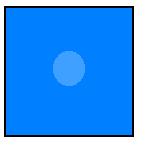 |
4. Slight change in shirt color but barely noticeable. |
 |
5. No change in shirt color. |
Now, compare the "washed only" square C to the "unwashed" square E and the
"washed only" square D to the "unwashed" Square F. Use the same rubrics from above that you used to score squares A and B for both the Change in Stain and Loss of Color.
Once you've completed your testing and scored your results,
share your results with others to KanCRN.
Research Method Discussions
This Research Method forum is for discussion of the research methods used in the ozone project. You may post questions, comments, concerns, and/or suggested improvements to any aspect of the research method(s) above.
what detergent gets the stain out the best,
01/16/03, stephanie
nope,
09/29/02, kauki meshang
removeal of mustard,
01/30/02, Bridgette Heenan
How Do You Get Out?,
10/04/01, Ronnie Carter
laughing,
02/04/00, eumeka pledger
View the Next 20 Submissions
| View the Best 20 Submissions
I have a research idea to submit.
|

